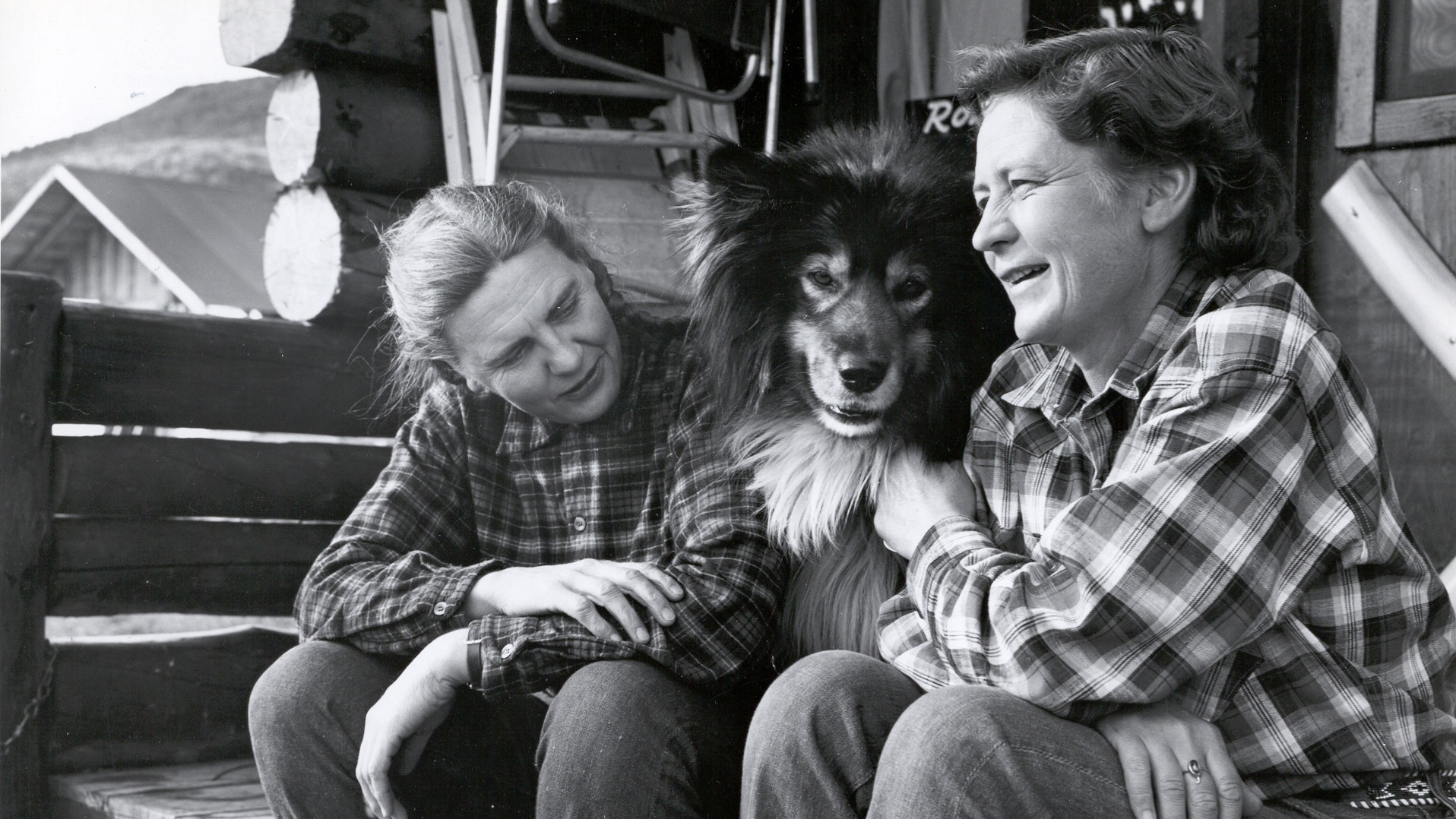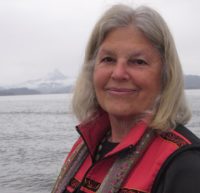Celebrating the lifetime achievements of Alaska’s foremost conservation leaders
Alaska Conservation Foundation established the Lifetime Achievement Award in 2001 to recognize the extraordinary accomplishments of Alaska’s great conservation leaders. These distinguished individuals have made significant contributions to Alaska and have served as an inspiration to other conservationists throughout the state. Through their tireless advocacy, they have protected Alaska’s unparalleled natural resources to the benefit of us all. Learn more about these inspirational leaders from their biographies written at the time of their nomination and acceptance, below.
2021 – Marilyn Sigman
Marilyn Sigman was a freshman in college during the first Earth Day in 1970, which turned out to be the educational event that inspired her focus on ecology and environmental work and advocacy ever after. She arrived in Alaska in 1974 as a graduate student at UAF in wildlife management with a research project involving moose cow-calf behavior. During the time when she was analyzing her data and writing up her thesis in Fairbanks, she took a part-time job as an administrative assistant at the Northern Alaska Environmental Center. There, she typed up lots of meeting notes, witnessed coalition building, and was inspired by the kitchen-table discussions that culminated in d-2 and ANILCA land designations and protections. She spent the next several decades working throughout the state, first as a wildlife and habitat biologist for state and federal agencies and later as an environmental educator and director of the Center for Alaska Coastal Studies in Homer. Before her retirement from the UAF faculty in 2019, she worked for a decade as the marine education specialist for Alaska Sea Grant, supporting education and outreach about ocean climate change, including facilitating and supporting collaborations among Indigenous educators and other Indigenous knowledge holders with scientists and educators trained in western ecological science and western science education methods. She has served on the boards of environmental organizations and as the Board Chair for ACF, Alaska Geographic (when it was formerly ANHA), and the Alaska Natural Resources and Outdoor Education Association. Her book, Entangled: People and Ecological Change in Alaska’s Kachemak Bay, was selected to receive the 2020 John Burroughs Medal for outstanding natural history writing. Marilyn lives in Homer, within the traditional homelands of the Dena’ina and the Sugpiaq Alutiit, where she tends her garden and a small patch of forest habitat that provides her with opportunities to continue to ruminate alongside the moose who find shelter there and to watch the birds who gladden her heart.
2020 – Jim Kowalsky
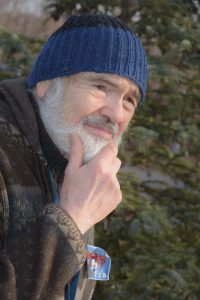
Jim Kowalsky was the first executive director of the Fairbank Environmental Center (now the Northern Alaska Environmental Center) and Friends of the Earth representative. In these positions, Jim was an effective leader in representing environmental concerns during conflicts over the authorization of the Trans Alaska Pipeline, implementation of the Alaska Native Claims Settlement Act, as well as the development of a nationwide campaign for the Alaska National Interest Lands Conservation Act helping to amplify concerns for conservation in those critical times. In 1980, Jim worked with the Tanana Chiefs Conference helping Alaska natives in wildlife and resource management issues throughout Interior Alaska. After retiring as Director of the University of Alaska’s Rural Alaska Honors Institute, he founded Alaskans FOR Wildlife, to address many long-neglected wildlife issues in Alaska where he served as Director for many years. In all endeavors, Jim brings passion, dedication, knowledge, and determination. He truly embodies a lifetime of achievement.
2019 – Jim Stratton
Jim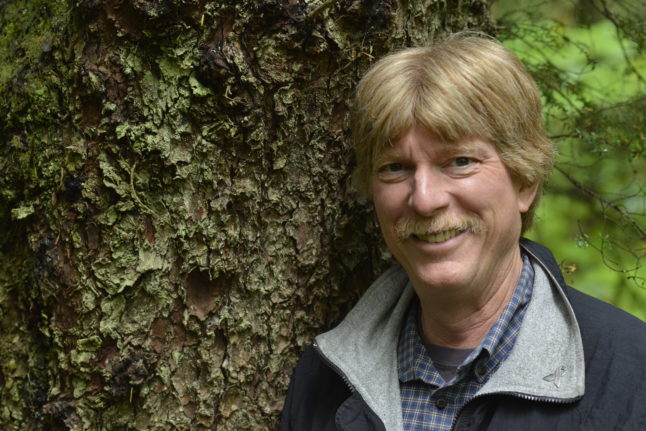 Stratton (Stratto) has worked consistently and tirelessly since 1981 for Alaska conservation. Stratto arrived in Alaska 38 years ago right after the passage of the Alaska Lands Act (ANILCA) to be the Executive Director of the Southeast Alaska Conservation Council (SEACC). He later served as Program and Finance Director for Alaska Conservation Foundation, Director of the Alaska State Division of Parks, and the Alaska Regional Director of the National Parks and Conservation Association (NPCA).
Stratton (Stratto) has worked consistently and tirelessly since 1981 for Alaska conservation. Stratto arrived in Alaska 38 years ago right after the passage of the Alaska Lands Act (ANILCA) to be the Executive Director of the Southeast Alaska Conservation Council (SEACC). He later served as Program and Finance Director for Alaska Conservation Foundation, Director of the Alaska State Division of Parks, and the Alaska Regional Director of the National Parks and Conservation Association (NPCA).
Under his leadership new initiatives were created including the Alaska Marine Conservation Council (AMCC), the Alaska Rainforest Campaign, the Alaska Environmental Lobby, and the Alaska Community Share charitable giving program. Several additions to the state park system can be credited to Stratto and he successfully fought for new protections for both our state and national parks.
Over the years he has provided mentoring and guidance to many organizations and conservation leaders. It has not only been through paid positions that Stratto has contributed his considerable skills in advancing conservation. He has served on the boards of TREK – the conservation leadership organization, Great Land Trust, and Trustees for Alaska. One of his special skills of which he has given freely to many organizations and causes is auctioneering. In this role, he has raised hundreds of thousands of dollars in support of environmental and progressive causes, notably many years at the annual Alaska Center for the Environment fundraiser.
Jim has been a key person in helping to establish and maintain the Alaska conservation community. Jim’s boundless energy, enthusiasm, and sense of humor are incredible.
2017 – Rick Sinnott

Rick Sinnott exemplifies Alaska’s conservation leaders in his resolve to address wildlife issues with science and his dedication to sustaining Alaska’s wildlife and habitats. Rick’s career largely involved managing the interface of wild animals and man in Alaska’s largest city. That responsibility exposed him to strong public opinions, the occasional need to criticize his own agency and forging new ways for wildlife and people to coexist.
During his 28-year career as a wildlife biologist with Alaska Fish and Game, mostly as Anchorage Area Biologist, Rick single-mindedly pursued Thoreau’s admonition “In wildness is the preservation of the world.” His knowledge and interpretations of wildlife and human behaviors with plain language and acerbic wit made him an astute media celebrity.
Needless to say, managing wildlife in populous Anchorage precipitates constant problems, from bear and moose conflicts to goose poop in parks. The city hosts an unprecedented menagerie of 300 black bears, 60 brown bears and, during winter, around 1,000 moose. It says a lot when Mark Begich, former Anchorage Mayor says, “Anytime there’s an animal issue, I expect Rick to be there.”
After retirement, Rick has continued involvement in conservation issues—mostly as a writer for the Alaska Dispatch News—but also volunteering on the Anchorage Watershed and Natural Resources Commission and Chugach State Park Citizens Advisory Board. One of his recent causes, advocating for removal of the dam on Eklutna River, is moving forward to restore a long-lost salmon run.
Rick’s determination to promote wildlife and wild places through education, advocacy and public engagement is a great asset to our sense of place and conservation in Alaska. We hope to see the curious fellow with the shabby ADFG hat, fleece jacket and ever-present Xtra-tufs frequenting the trails, public meetings and the pages of our newspapers for a long time.
2016 – Bart Koehler

Bart was first inspired by Alaska conservation icons Mardy Murie and Celia Hunter when working for The Wilderness Society in Wyoming in the early 1970’s. He learned how to be an effective conservation leader from these legends. In 1975, Mardy sent him off to do battle in Washington, D.C. with a note of encouragement calling him her “Young Sir Gallahad with a pure heart” that he still carries with him. In 1977, Celia assigned him to help mobilize citizens across the West to advocate for passage of the Alaska Lands Act (ANILCA).
These connections to Alaska, and particularly the Tongass National Forest, would deepen when he moved here in 1984 to lead the Southeast Alaska Conservation Council. This was the start of a 32-year relationship with the organization as both its Director (twice) and Board member during some of the Tongass’ most politically tumultuous times. Over these years, Bart worked to build a powerful grassroots movement throughout the region focused on achieving passage of the Tongass Timber Reform Act of 1990, which protected over 1.4 million acres of Southeast Alaska’s most productive fish and wildlife habitat. (Bart received Alaska Conservation Foundation’s Olaus Murie Award in 1990 for these efforts.) When the Tongass came under attack five years later in Congress, Bart led the movement to defend those protections, which ultimately shut down both enormous pulp mills. These actions brought a sea change in Tongass management, opening the door to a brighter future for the region. In the end, Bart says this award truly belongs to “all of the salt-of-the-earth citizens who spoke out for saving the wild heart of the Tongass—the true unsung heroes of this saga.”
While for more than four decades Bart has worked for wild places across America, Alaska is where his team efforts surmounted the greatest challenges. Even after all of these gains, he knows there is much work to do to advance protections for its public lands. Alaska is where he embraced many of the most defining moments in his life, including finding his true love, Julie. As such, it will always have a special place in his heart.
2015 – Helen Nienhueser
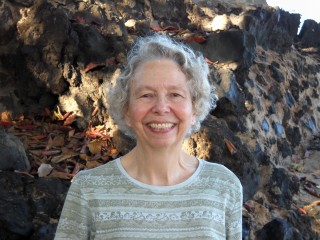
Helen Nienhueser grew up in the Pocono Mountains of Pennsylvania, graduated from Brown University and moved to Alaska in 1959. She worked for the Girl Scouts, homesteaded in Eagle River, had two children, joined the Mountaineering Club and began working on the acclaimed Alaska hiking guide 55 Ways to the Wilderness in Southcentral Alaska (first published in 1972, it is now in its 5th edition).
When conservationists began organizing in Anchorage in the late 60s, Helen became active. In the 1970s, influenced by Paul Erlich’s book The Population Bomb, she led the citizen lobby group that pushed the Alaska Legislature to adopt a groundbreaking abortion law. She joined the committee that established the Alaska Center for the Environment, served on the board for nine years, and was one of five “mothers” who operated ACE during the critical early years leading up to establishment of the Alaska National Interest Lands Conservation Act.
During her 18-year career at the Alaska Department of Natural Resources, Helen helped develop and implement a planning process for state lands that included more robust public participation. During that time she also served on Alaska Conservation Foundation’s Board, the Anchorage Parks and Recreation Commission and earned an MPA from Harvard’s Kennedy School of Government. In the 90s, Helen co-chaired the Midtown Park Steering Committee, which resulted in Cuddy Family Midtown Park, and she chaired the Trails and Recreational Access for Alaska (TRAAK) Board which advised the Alaska Department of Transportation and the State Division of Parks on establishing trails statewide. Over the last 15 years, Helen served another three terms on ACF’s Board and more recently is serving on the Board of Alaska Geographic. Helen has dedicated her life to protecting Alaska’s natural environment. The theme that runs throughout for Helen is one of citizen engagement. Alaska and Alaskans are better off because of her tireless advocacy.
2014 – Bob Childers
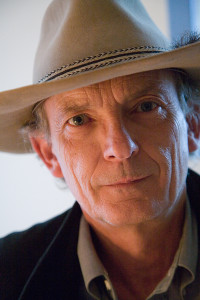
Bob came to Alaska in the fall of 1972. It was an exciting time in Alaska’s history. The Alaska Native Claims Settlement Act (ANCSA) had just passed and the pipeline was yet to be decided. The Federal-State Land Use Planning Commission, established to oversee implementation of ANCSA, was established with Bob’s mentor Dick Cooley as one of the federal commissioners along with Celia Hunter, Walt Parker and other luminaries. Bob worked for the planning commission as a draftsman gathering information for the first statewide resource maps of Alaska. He was recruited to join other conservationists on Mark Ganapole’s famous living room floor where they met every week for months mapping out the areas that would eventually become the Parks and Refuges we have today.
He served on the Board of Directors of the Alaska Center for the Environment and was deeply engaged in working to assure the Trans Alaska Pipeline was built with as little environmental and cultural damage as possible. Bob documented the various egregious mistakes that occurred during construction, and out of this effort was instrumental in helping establish Trustees for Alaska (he currently serves on their Board). Bob played a large part in the success of the 1987 U.S.-Canada Porcupine Caribou Herd Agreement. He was awarded the Celia Hunter Award for his efforts and was made an Honorary Member of the Gwich’in Nation by their Chiefs, the only person so honored.
Today Bob consults on international issues and along with Eric Smith and Peter Van Tuyn, they constitute the permanent U.S. delegation to the NE Asia / North Pacific Environmental Forum – a high-level talking club of mostly Ministers and Deputy Ministers of several Asian nations including China, Japan, South Korea, Mongolia and the Eastern Russian “Republics”. What Bob describes as “serious fun.”
2012 – Jack Lentfer

A pioneer in polar bear research and active conservationist for 50 years, Jack Lentfer has devoted his life to preserving Alaska’s wildlife. During his long career with the US Fish and Wildlife Service and the Alaska Department of Fish and Game (ADF&G), Jack developed a reputation as a researcher committed to scientific integrity and honesty. He courageously stood tall for wildlife conservation, never intimidated or silenced by political pressure. Whether leading ADF&G’s brown and polar bear research programs, running countless expeditions to the Arctic, or dealing with southeast Alaska forest habitat issues, Jack has worked tirelessly for the conservation of Alaska’s wildlife and wild lands.
An outspoken critic of aerial hunting of polar bears, Jack was a major player in the preservation of this iconic Arctic species. During his time with the Alaska Board of Game, he insisted on using science as the foundation for allocation decisions, a significant transition from the Board’s previous strategy. Numerous congressional hearings over the years have featured Jack’s scientific knowledge; perhaps most notable is his 1986 testimony on the Tongass National Forest before the House Committee on Interior and Insular Affairs that led to the Tongass Timber Reform Act.
Jack was an original member of the IUCN/International Polar Bear Specialist Group in 1968 and has served on the US Marine Mammal Commission and the National Marine Fisheries Service Steller Sea Lion Recovery Team. He is a Fellow of the Arctic Institute of North America, a past President of the Alaska Chapter of The Wildlife Society, and author of many scientific papers. Even at age 80, his passion for conservation continues. He goes the extra mile to translate his knowledge and professional expertise directly into conservation action, providing Alaska with an unwavering voice for conservation science and balanced management.
2008 – Tom Meacham
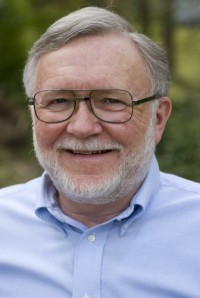
Tom Meacham has practiced environmental and natural resources law in Alaska since 1971. Professionally, he has been in private law practice in Anchorage with two law firms and in a solo law office. In public service, he was the Assistant Alaska Attorney General responsible for land and conservation issues during the Alaska National Interest Lands Conservation Act (ANILCA) enactment process in Washington, DC in 1976-82. Since he arrived in Alaska courtesy of the US Army in 1967, he has been active as a legal volunteer on a variety of issues involving federal and state parks, wildlife, public land management and access, and water allocation. He has been involved in public-interest litigation on snowmachine use in Denali National Park, mining claims in Chugach National Forest, and Board of Game issues.
In 1975, Tom was appointed by Gov. Hammond as the first non-hunter on the Alaska Board of Game. He also served on the Alaska Water Resources Board, the Chugach State Park Citizens Advisory Board (including three years as chair), and as vice-chair of the Far North Bicentennial Park Task Force. Tom is a co-founder of the Hans Van Der Laan Brooks Range Trust, the Alaska Quiet Rights Coalition, the Friends of Bicentennial Park, and the Chugach Park Access Coalition. Over the past four decades, he has authored numerous well-written letters to the editor on topics ranging from the Alaska Native Claims Settlement Act (ANCSA) and ANILCA, to access to public lakes and wolverine trapping in state parks. His invaluable efforts on behalf of Alaska’s public resources have been instrumental in protecting this wonderful state.
2006 – Richard Nelson
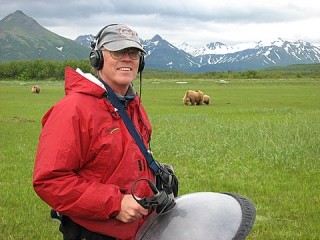
Dr. Richard Nelson is a cultural anthropologist and creative nonfiction writer whose work focuses on human relationships to the natural world. Richard has lived in Alaska for four decades and during this time, he has become one of Alaska’s most famous conservationists, both professionally through his books which include Hunters of the Northern Ice, Shadow of the Hunter, Make Prayers to the Raven, and The Athabaskans; and personally through his long-time service as a board member of the Sitka Conservation Society and willingness to speak about the value of Alaska’s wildlife, waters and wild lands for just about any conservation organization that needs a hand.
Richard’s work has always focused on the personal, including The Island Within, a personal journey into the natural world surrounding his home, which received the John Burroughs Award for nature writing. One of his more recent projects is Encounters, a weekly, half-hour radio series broadcast on public radio stations throughout Alaska, which explores the natural world and human relationships to the environment in Alaska. As one fan states, “Nelson will leave you more curious about our Earth and motivated to find your own way to participate in preserving America’s wild places.”
Richard’s full career as an anthropologist, writer, and journalist has been guided by Alaska’s amazing places, wildlife, waters and peoples. As a man, he has lived according to his values with respect for the world of wildlife, waters and wild lands which sustain him. For the last four decades, Richard has brought an incalculable number of Alaskans and Americans closer to the natural world with an unparalleled whit and respect.
2004 – Lowell Thomas, Jr.
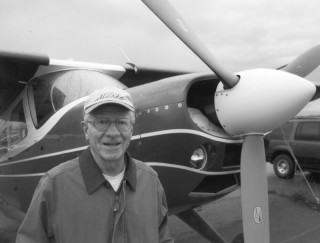
Lowell Thomas, Jr.’s lifelong dedication to Alaska’s wildlife and parks has and continues to make an indelible mark on the State. As Alaska State Senator in the early 1970’s and later Lieutenant Governor, Lowell worked tirelessly to protect and preserve Alaska’s wildlife, wilderness, ecosystems, and sustainable communities for present and future generations.
Lowell was instrumental in the establishment of Chugach State Park and stepped forward when the Arctic National Wildlife Refuge was threatened. For decades, he has been a significant supporter of many conservation groups and efforts, including the National Parks Conservation Association, Alaska Conservation Foundation, Boy Scouts of America, and Alaska Pacific University’s nordic skiing program. As pilot and author, Lowell has shared his passion for Alaska’s environment with countless others.
Sadly, Lowell Thomas, Jr. passed away in 2016.
2004 – Jim and Mary Lou King
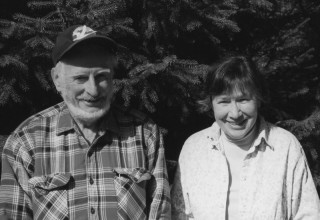
James G. and Mary Lou King are lifelong conservationists living in Juneau. Jim worked as a biologist with the U.S. Fish and Wildlife Service for most of his career, advocating wildlife conservation in Alaska, and was instrumental in establishing nine national wildlife refuges protecting over 23 million acres. His specific passion is birds and he has been an innovator in the field of waterfowl population surveys, developing schemes to measure migratory bird populations throughout the state.
Mary Lou taught high school for six years before moving to Juneau in 1958. Following their marriage, she and Jim lived in Interior Alaska, returning to Juneau in 1964. Her volunteer work coordinating the Seaweek Program led her to write about the extensive trail system in Juneau, in her popular book 90 Short Walks Around Juneau.
2004 – Peg Tileston
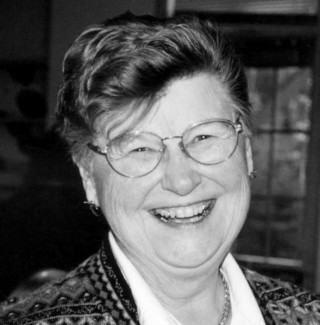
Peg Tileston has been guiding Alaska’s conservation movement ever since the pioneering activist set down roots in the state decades ago. She helped launch a number of Alaska’s most critical conservation organizations, among them: Alaska Center for the Environment, the state’s largest grassroots conservation group; Trustees for Alaska; Alaska Common Ground; and Alaska Conservation Foundation.
Peg helped establish National Wildlife Federation’s Alaska Women’s Environmental Network (AWEN). Since its inception in 1994, AWEN has created networking opportunities and training workshops that empower women and further their involvement in the conservation movement. Peg’s tireless effort and enthusiasm within Alaska’s conservation community have been nothing short of astounding.
2002 – Jay Hammond
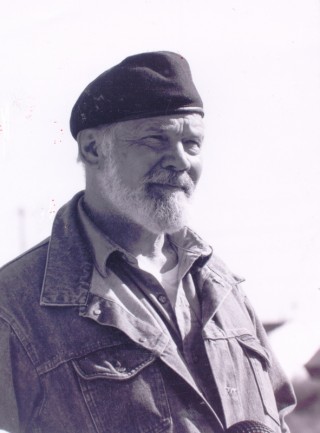
Governor Jay Hammond’s steady leadership guided Alaska through a pivotal period in Alaska’s history that included the discovery and development of oil in Prudhoe Bay and the settlement of the Alaska National Interest Land Conservation Act (ANILCA). His balanced approach allowed the economy to grow without sacrificing the Alaskan landscape or lifestyle. Jay’s political career began in 1959, when he served in Alaska’s first legislature. He represented the Bristol Bay region in both the House and Senate before being elected Governor in 1974. He served two terms ending in 1982.
During Jay’s political tenure he sponsored a wealth of legislation to promote stewardship of Alaska’s land, wildlife and fisheries resources. He helped establish the state Board of Fish and Game and local Fish and Game Advisory Boards; sponsored legislation that banned poison for predator control; proposed regulations banning same-day airborne wolf hunting; co-sponsored the creation of the McNeil Bear Refuge and helped to create the Chilkat Bald Eagle Preserve.
As a strong advocate for sustainable fisheries, Jay’s efforts included creation of the Bristol Bay Fish Sanctuary, sustainable yield proposals for Alaska’s fisheries and he persuaded then Secretary of Interior James Watt against issuing oil leases in Bristol Bay. His efforts also resulted in the state buying back oil leases in Kachemak Bay.
Jay came to Alaska in 1946 after serving in the U.S. Marine Corps and earned a degree in biological sciences in 1949 from the University of Alaska in Fairbanks. He homesteaded in Lake Clark in the early fifties, and worked with U.S. Fish and Wildlife Service as a field agent until beginning his political career. Jay’s unique style resonated with Alaskans of all types. Never shy, he always spoke his mind on the benefits of conservation and fiscal responsibility in editorials, books and public appearances. To this day, his legacy lives on in Alaska.
Sadly, Governor Hammond passed away in 2005.
2002 – Mark Ganopole Hickok
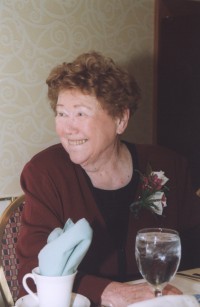
Mark Hickok’s legacy of grassroots conservation resulted in some of the most lasting achievements in Alaska’s conservation history. During the months preceding the passage of Alaska National Interest Lands Conservation Act (ANILCA), Mark’s apartment became home to the “Maps on the Floor Society,” where people gathered to study maps and identify lands for protection. From meetings with bush pilots and rural citizens, to communications with state and federal land managers, Mark gathered intelligence, coordinated information and worked with others to present the best options for protecting Alaska’s lands.
This voluntary effort resulted in a map that displayed wildlife populations, valuable habitat, spectacular landscapes, mineral deposits and other natural features in a series of transparent overlays. Walt Parker hand delivered the final map to the Department of Interior Secretary Morton. This effort was one of the most effective collaborative and community-based conservation campaigns in Alaska’s history.
A Sierra Club member since 1940, Mark served on the board from 1977-1980 and she helped found the Club’s Alaska Chapter. She also co-founded the Alaska Wilderness Council to coordinate Alaska’s grassroots conservation groups in identifying areas for new state parks and the selection of (d) (2) lands. Mark worked to establish the Brooks Range Trust with Ruth Schmidt, which managed a small endowment from the estate of mountaineer Hans van der Laan to create a Brooks Range library collection at Anaktuvuk Pass and support conservation groups working to protect northern Alaska.
Among Mark’s other notable achievements: creation of Kachemak State Park, signed into law by Governor Jay Hammond; creation of the Chugach State Park with Sharon Cissna and others; and establishment of Wood-Tikchik State Park with Neil Johannsen. Mark’s dedication to creating and protecting public lands has left a living landscape for generations of Alaskans.
Sadly, Mark Hickok passed away in 2006.
2002 – Walter Parker
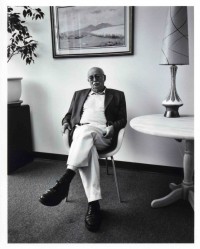
Walter Parker’s conservation activism is grounded in a long relationship with Alaska’s wild places. Walt came to the state in 1946 to work for the Civil Aeronautics Administration (CAA) and later completed a degree at the University of Alaska in Fairbanks. He headed out with his wife and lifelong partner, Patricia, to Lake Minchumina, where he trapped, ran dogs, flew small planes and worked as a radio operator for the CAA. After retiring from his Federal career, Walt moved to Anchorage and started a consulting firm. He also became an adjunct professor at the University in regional and urban planning, public administration, and political science. Walt was elected to the Anchorage Assembly in 1971 after serving as Chair of the Anchorage Parks and Recreation Association, the Anchorage Transit Committee and the Anchorage Chapter of the Alaska Conservation Society.
Walt served under Governor Bill Egan as Environmental Consultant of the TransAlaska Pipeline and then for Governor Jay Hammond to create a new Department of Transportation (that included non-motorized priorities). Walt was appointed as State co-chairman of the Joint Federal State Land Use Commission, which worked with Celia Hunter and other citizens. While serving as Commissioner of Highways, he negotiated a settlement of the Copper River Highway suit with the Sierra Club.
After the Exxon Valdez Oil Spill, Governor Steve Cowper appointed Walt Chair of the Alaska Oil Spill Commission. President Clinton appointed him to the U.S. Arctic Research Commission and the American delegation to the U.N. Arctic Environmental Protection Strategy. Walt served on the first U.S. delegation in the Arctic Council after the U.S. joined in 1996.
Walt’s participation in citizen based grassroots efforts included serving as founding board member of Trustees for Alaska and Alaska Center for the Environment and he continues to sit on many boards serving Southcentral Alaska. As a citizen activist, professional planner and statesman for Arctic regions, Walt has shaped Alaska’s future and inspired numerous others to build strong communities.
Sadly, Walt Parker passed away in 2014.
2001 – Celia Hunter & Ginny Wood
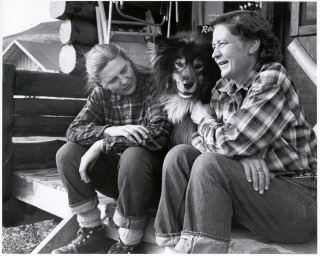
Celia Hunter and Ginny Wood first came to Alaska in 1947 by flying two war-surplus airplanes from Seattle to Fairbanks. They settled in Fairbanks as flight instructors and later worked for Chuck West, who founded Westours. In 1951, together with Woody Wood, they began building Camp Denali, a precedent setting wilderness lodge in the Kantishna area, adjacent to Denali National Park. In 1960, with a small group of Fairbanks conservationists, they founded the Alaska Conservation Society, the first statewide conservation organization in Alaska.
In 1972 Celia was appointed to the Federal-State Land Use Planning Commission for Alaska, which had to deal with emerging land use conflicts and policy issues in the aftermath of Statehood. These included the identification of major additions to National park, Refuge, Wild and Scenic River, and Wilderness systems. The Alaska National Interest Lands Conservation Act (ANILCA) of 1980 reflected Celia’s dedicated work to keep these issues at the forefront of the Commission’s work.
Celia helped found the Alaska Conservation Foundation in 1980, and served as its first Board Chairperson. During the late 1960s to 1978, she was also a member of the Governing Council of the Wilderness Society and served as an interim Executive Director for the Society in 1977 and 78. During this time, Ginny was operating Tundra Treks, a backcountry guiding business in the Brooks Range. Throughout Ginny’s life, she has been actively involved in grassroots conservation work through the Northern Alaska Environmental Center. She was appointed to the Trails and Recreational Access for Alaska (TRAAK) by Governor Tony Knowles in 1996.
In 1991, Celia and Ginny were given the John Muir Award, the highest honor of the Sierra Club. Celia was also presented The Wilderness Society, Robert Marshall Award in 1998 for contributions to the preservation of wilderness. Both women were prolific writers; Ginny wrote regular columns for the Northern Alaska Environmental Center’s newsletter, and Celia had a long running weekly column in the Fairbanks News-Miner.
In 2002, Rick Caulfield, ACF’s then Board Chair said of Celia and Ginny: Each of these women epitomizes, in their own way, the best of Alaska’s conservation movement. They overcame substantial challenges to create a life in Alaska that is respectful of the natural environment. They’ve dedicated their lives to environmental justice and protecting Alaska’s wild places. Their unique contributions of activism and stewardship are an inspiration for us all. Their contributions set a high standard for this Lifetime Achievement Award.
Sadly, Celia Hunter and Ginny Wood passed away in 2001 and 2013, respectively.
